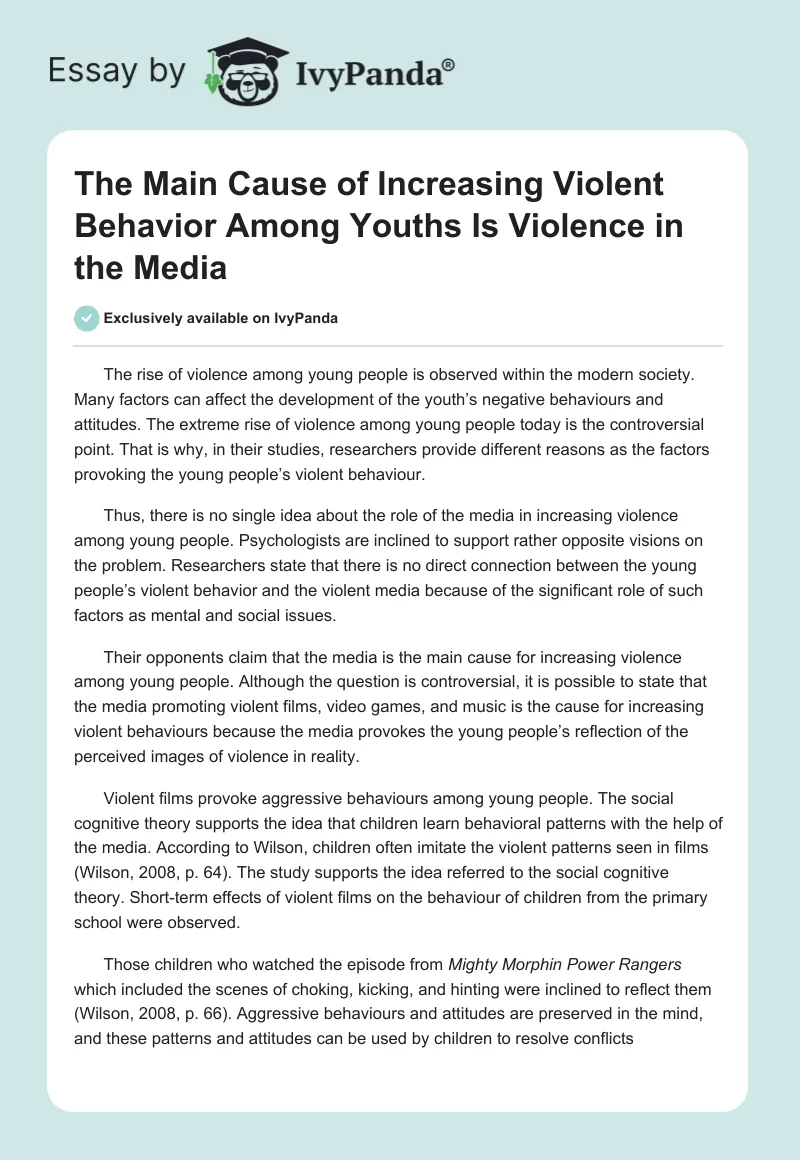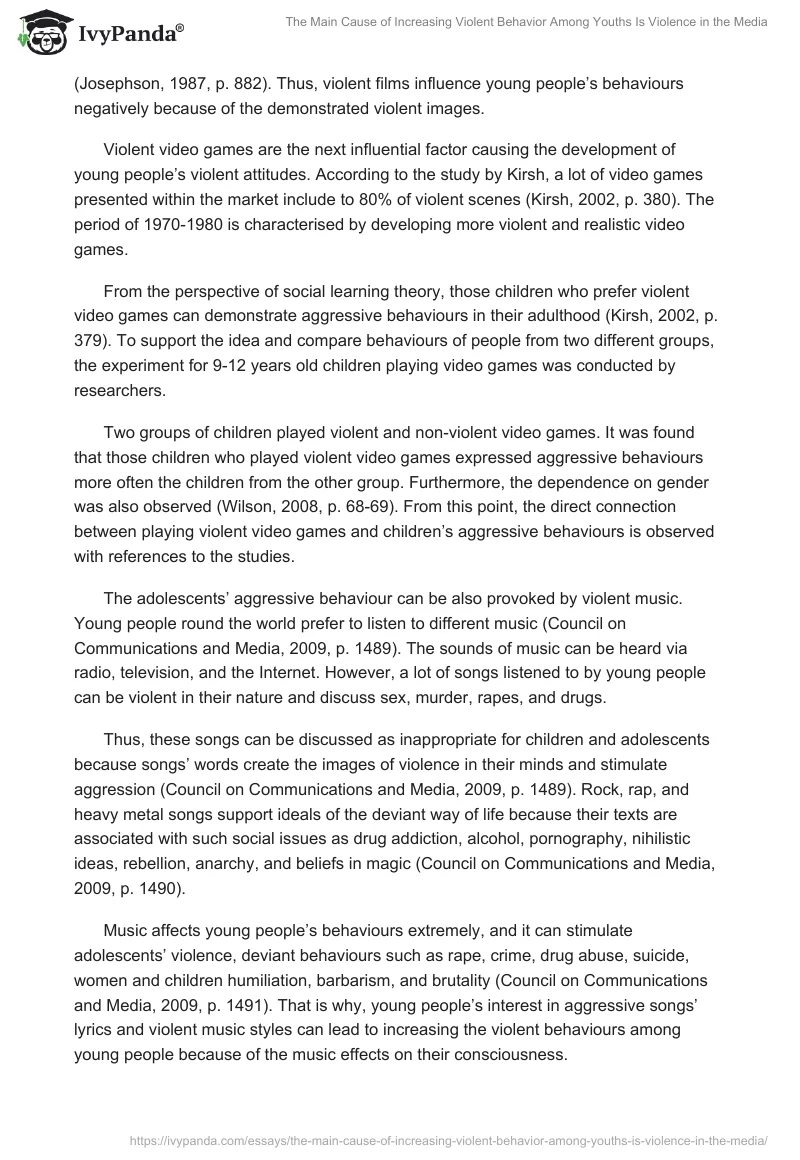The rise of violence among young people is observed within the modern society. Many factors can affect the development of the youth’s negative behaviours and attitudes. The extreme rise of violence among young people today is the controversial point. That is why, in their studies, researchers provide different reasons as the factors provoking the young people’s violent behaviour.
Thus, there is no single idea about the role of the media in increasing violence among young people. Psychologists are inclined to support rather opposite visions on the problem. Researchers state that there is no direct connection between the young people’s violent behavior and the violent media because of the significant role of such factors as mental and social issues.
Their opponents claim that the media is the main cause for increasing violence among young people. Although the question is controversial, it is possible to state that the media promoting violent films, video games, and music is the cause for increasing violent behaviours because the media provokes the young people’s reflection of the perceived images of violence in reality.
Violent films provoke aggressive behaviours among young people. The social cognitive theory supports the idea that children learn behavioral patterns with the help of the media. According to Wilson, children often imitate the violent patterns seen in films (Wilson, 2008, p. 64). The study supports the idea referred to the social cognitive theory. Short-term effects of violent films on the behaviour of children from the primary school were observed.
Those children who watched the episode from Mighty Morphin Power Rangers which included the scenes of choking, kicking, and hinting were inclined to reflect them (Wilson, 2008, p. 66). Aggressive behaviours and attitudes are preserved in the mind, and these patterns and attitudes can be used by children to resolve conflicts (Josephson, 1987, p. 882). Thus, violent films influence young people’s behaviours negatively because of the demonstrated violent images.
Violent video games are the next influential factor causing the development of young people’s violent attitudes. According to the study by Kirsh, a lot of video games presented within the market include to 80% of violent scenes (Kirsh, 2002, p. 380). The period of 1970-1980 is characterised by developing more violent and realistic video games.
From the perspective of social learning theory, those children who prefer violent video games can demonstrate aggressive behaviours in their adulthood (Kirsh, 2002, p. 379). To support the idea and compare behaviours of people from two different groups, the experiment for 9-12 years old children playing video games was conducted by researchers.
Two groups of children played violent and non-violent video games. It was found that those children who played violent video games expressed aggressive behaviours more often the children from the other group. Furthermore, the dependence on gender was also observed (Wilson, 2008, p. 68-69). From this point, the direct connection between playing violent video games and children’s aggressive behaviours is observed with references to the studies.
The adolescents’ aggressive behaviour can be also provoked by violent music. Young people round the world prefer to listen to different music (Council on Communications and Media, 2009, p. 1489). The sounds of music can be heard via radio, television, and the Internet. However, a lot of songs listened to by young people can be violent in their nature and discuss sex, murder, rapes, and drugs.
Thus, these songs can be discussed as inappropriate for children and adolescents because songs’ words create the images of violence in their minds and stimulate aggression (Council on Communications and Media, 2009, p. 1489). Rock, rap, and heavy metal songs support ideals of the deviant way of life because their texts are associated with such social issues as drug addiction, alcohol, pornography, nihilistic ideas, rebellion, anarchy, and beliefs in magic (Council on Communications and Media, 2009, p. 1490).
Music affects young people’s behaviours extremely, and it can stimulate adolescents’ violence, deviant behaviours such as rape, crime, drug abuse, suicide, women and children humiliation, barbarism, and brutality (Council on Communications and Media, 2009, p. 1491). That is why, young people’s interest in aggressive songs’ lyrics and violent music styles can lead to increasing the violent behaviours among young people because of the music effects on their consciousness.
Thus, the media can be considered as the main cause for increasing violence among young people because violent films, video games, and music are broadcast through different devices and affect the youth’s social behaviours and attitudes. The rise of violence among young people can also lead to the increase of the social violence and to the increase of crime and riot rate within the society.
That is why, people should pay attention to the potential impact of the media on the young people’s behaviours and attitudes. Furthermore, it is possible to educate the youth in relation to the effects of the media on their lives and behaviours in order to prevent the increase of violence in the society.


